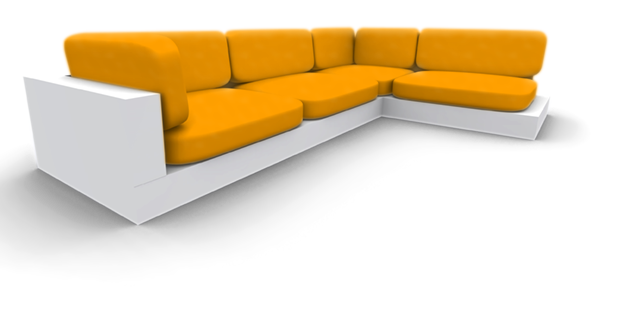| Autor |
Beitrag |
huuuuuh
       
Beiträge: 665
Erhaltene Danke: 19
win xp, (win vista), win 7
VS 2008 Express Edition, VS 2010 Express Edition, VS 2010 Professionell
|
Verfasst: Mo 07.04.08 18:03
wir ham in der schule die aufgabe gekriegt nen kleinen funktionsplotter mit canvas zu schreiben
nach der allgemeinen quadratischen funktions-formel y = ax² + bx + c
hab da jetz diesen quelltext
1:
2:
3:
4:
5:
6:
7:
8:
9:
10:
11:
12:
13:
14:
15:
16:
17:
18:
19:
20:
21:
22:
23:
24:
25:
26:
27:
28:
29:
30:
31:
32:
33:
34:
35:
36:
37:
38:
39:
40:
41:
42:
43:
44:
45:
46:
47:
48:
49:
| procedure TForm1.Button1Click(Sender: TObject); var xbes,ybes : integer;
beschriftung:integer;
begin
with canvas do
Begin
moveto(200,250);
Lineto(700,250);
moveto(450,50);
lineto(450,450);
textout(450-3,250-3,'0');
xbes:=200;
beschriftung:=-10;
repeat
if not (beschriftung=0) then textout(xbes-2,252, inttostr(beschriftung));
xbes:=xbes+25;
beschriftung:=beschriftung+1;
until xbes>700;
beschriftung:=10;
ybes:=45;
repeat
if not (beschriftung=0) then textout(440,ybes, inttostr(beschriftung));
ybes:=ybes+20;
beschriftung:=beschriftung-1;
until ybes>450;
end;
end;
procedure TForm1.Button2Click(Sender: TObject); VAR x,y,a,b,c:Real;
begin
a:=strtofloat(edit1.Text);
b:=strtofloat(edit2.Text)+25;
c:=strtofloat(edit3.Text)+20;
x:=strtofloat(edit4.Text);
y:=(a*x*a*x+b*x+c)+250;
x:=x+450;
if y>screen.DesktopHeight then y := form1.Height+1;
canvas.moveto(round(X),round(Y));
x:=x-450;
x:=x+0.1;
Repeat
y:=(a*x*a*x+b*x+c)+250;
x:=x+450;
canvas.lineto(round(X),round(Y));
x:=x-450;
x:=x+0.1;
Until x >1000;
end; |
Nun das programm zeichnet mir teile von parabeln, es soll aber eine ganze parabel zeichnen
Was mach ich falsch???
|
|
huuuuuh 
       
Beiträge: 665
Erhaltene Danke: 19
win xp, (win vista), win 7
VS 2008 Express Edition, VS 2010 Express Edition, VS 2010 Professionell
|
Verfasst: Mi 09.04.08 14:13
|
|
Christian S.
       
Beiträge: 20451
Erhaltene Danke: 2264
Win 10
C# (VS 2019)
|
Verfasst: Mi 09.04.08 14:17
Welche Teile werden denn gezeichnet?
_________________ Zwei Worte werden Dir im Leben viele Türen öffnen - "ziehen" und "drücken".
|
|
huuuuuh 
       
Beiträge: 665
Erhaltene Danke: 19
win xp, (win vista), win 7
VS 2008 Express Edition, VS 2010 Express Edition, VS 2010 Professionell
|
Verfasst: Mi 09.04.08 15:52
ich häng die exe mal an...
Einloggen, um Attachments anzusehen!
|
|
Christian S.
       
Beiträge: 20451
Erhaltene Danke: 2264
Win 10
C# (VS 2019)
|
Verfasst: Mi 09.04.08 16:05
Folgende Probleme sehe ich:
1. Du zeichnest zwar die Achsen so, dass eine Einheit = 25 Pixel sind, Du zeichnest den Graphen aber nicht entsprechend, dort ist eine Einheit = 1 Pixel
2. Du berechnest den Graphen a²x²+bx+c, Du quadrierst das a also auch mit.
3. Die Eingabe von x verwirrt, denn das ist ja die Laufvariable. Die sollte halt von links nach rechts laufen, über den Bereich wo auch die Skala ist
4. Das hier:
  Delphi-Quelltext Delphi-Quelltext
1:
2:
3:
| x:=x+450;
canvas.lineto(round(X),round(Y));
x:=x-450; |
würde ich so schreiben:
  Delphi-Quelltext Delphi-Quelltext
1:
| canvas.lineto(round(X+450),round(Y)); |
Das ist übersichtlicher und kürzer. In einem späteren Schritt solltest Du die 450 variabel machen (z.B. von der Fenstergröße abhängig), aber ein Schritt nach den anderen 
5. Der Graph wird falsch rum gezeichnet, weil das Koordinatensystem in Delphi umgedreht ist. _________________ Zwei Worte werden Dir im Leben viele Türen öffnen - "ziehen" und "drücken".
|
|
huuuuuh 
       
Beiträge: 665
Erhaltene Danke: 19
win xp, (win vista), win 7
VS 2008 Express Edition, VS 2010 Express Edition, VS 2010 Professionell
|
Verfasst: Do 10.04.08 14:02
so hab jetz diesen quelltext:
1:
2:
3:
4:
5:
6:
7:
8:
9:
10:
11:
12:
13:
14:
15:
16:
17:
18:
19:
20:
21:
22:
23:
24:
25:
26:
27:
28:
29:
30:
31:
32:
33:
34:
35:
36:
37:
38:
39:
40:
41:
42:
43:
44:
45:
46:
47:
48:
49:
50:
51:
52:
53:
54:
55:
56:
57:
58:
59:
60:
61:
62:
63:
64:
65:
66:
67:
68:
69:
70:
71:
72:
73:
74:
75:
76:
77:
78:
79:
80:
| unit Unit1;
interface
uses
Windows, Messages, SysUtils, Variants, Classes, Graphics, Controls, Forms,
Dialogs, StdCtrls;
type
TForm1 = class(TForm)
Button1: TButton;
Button2: TButton;
Edit1: TEdit;
Edit2: TEdit;
Edit3: TEdit;
procedure Button1Click(Sender: TObject);
procedure Button2Click(Sender: TObject);
private
public
end;
var
Form1: TForm1;
implementation
{$R *.dfm}
procedure TForm1.Button1Click(Sender: TObject); var xbes,ybes : integer;
beschriftung:integer;
begin
with canvas do
Begin
moveto(200,250);
Lineto(700,250);
moveto(450,50);
lineto(450,450);
textout(450-3,250-3,'0');
xbes:=200;
beschriftung:=-10;
repeat
if not (beschriftung=0) then textout(xbes-2,252, inttostr(beschriftung));
xbes:=xbes+25;
beschriftung:=beschriftung+1;
until xbes>700;
beschriftung:=10;
ybes:=45;
repeat
if not (beschriftung=0) then textout(440,ybes, inttostr(beschriftung));
ybes:=ybes+20;
beschriftung:=beschriftung-1;
until ybes>450;
end;
end;
procedure TForm1.Button2Click(Sender: TObject);
VAR x,y,a,b,c:Real;
xkor: real;
begin
a:=-strtofloat(edit1.Text);
b:=strtofloat(edit2.Text)*25;
c:=strtofloat(edit3.Text)*20;
x:=-10;
x:=x*25;
xkor:=x;
y:=((a*x*x+b*x+c))*20;
if y>form1.Height then y := form1.Height+1;
canvas.moveto(round(x+450),round(y+250));
x:=x+0.1;
Repeat
y:=((a*x*x+b*x+c))*20;
canvas.lineto(round(X+450),round(Y+250));
x:=x+0.1;
Until x >-xkor;
end;
end. |
krig das mit der einheit aber noch nich hin
Einloggen, um Attachments anzusehen!
|
|
Christian S.
       
Beiträge: 20451
Erhaltene Danke: 2264
Win 10
C# (VS 2019)
|
Verfasst: Fr 11.04.08 17:21
Hm. Irgendwie sieht das für mich aus, als hättest Du mit dem Salzstreuer ein paar "*20" und "*25" da rein gemacht, ein wirkliches System erkenne ich da nicht. Im Prinzip ist das doch ein einfacher Dreisatz:
1 Einheit = 25 Pixel
x Einheiten = ? Pixel
Und dann das entsprechende x (oder auch y) eingesetzt. Du musst nur einmal pro Dimension multiplizieren / skalieren. Und die Skalierung zur Darstellung und nicht zur eigentlich berechnung gehört, sollte die auch bei LineTo stattfinden.
//edit: Bitte formatiere Deinen Quelltext, das ist sonst sehr mühsam zu lesen.
_________________ Zwei Worte werden Dir im Leben viele Türen öffnen - "ziehen" und "drücken".
|
|
huuuuuh 
       
Beiträge: 665
Erhaltene Danke: 19
win xp, (win vista), win 7
VS 2008 Express Edition, VS 2010 Express Edition, VS 2010 Professionell
|
Verfasst: Fr 11.04.08 22:02
so habs jetz - funktioniert jetz alles - auch mit der einheit
1:
2:
3:
4:
5:
6:
7:
8:
9:
10:
11:
12:
13:
14:
15:
16:
17:
18:
19:
20:
21:
22:
23:
24:
25:
26:
27:
28:
29:
30:
31:
32:
33:
34:
35:
36:
37:
38:
39:
40:
41:
42:
43:
44:
45:
46:
47:
48:
49:
50:
51:
52:
53:
54:
55:
56:
57:
58:
59:
60:
61:
62:
63:
64:
65:
66:
67:
68:
69:
70:
71:
72:
73:
74:
75:
76:
77:
78:
79:
80:
81:
82:
83:
84:
85:
86:
87:
88:
89:
90:
91:
92:
93:
94:
95:
96:
97:
98:
99:
100:
101:
102:
103:
| unit Unit1;
interface
uses
Windows, Messages, SysUtils, Variants, Classes, Graphics, Controls, Forms,
Dialogs, StdCtrls;
type
TForm1 = class(TForm)
Button1: TButton;
Button2: TButton;
Edit1: TEdit;
Edit2: TEdit;
Edit3: TEdit;
Button3: TButton;
procedure Button1Click(Sender: TObject);
procedure Button2Click(Sender: TObject);
procedure Button3Click(Sender: TObject);
procedure onclosequery(Sender: TObject; var CanClose: Boolean);
private
public
end;
var
Form1: TForm1;
implementation
{$R *.dfm}
procedure TForm1.Button1Click(Sender: TObject); var xbes,ybes : integer;
beschriftung:integer;
begin
with canvas do
Begin
moveto(200,250);
Lineto(700,250);
moveto(450,50);
lineto(450,450);
textout(450-3,250-3,'0');
xbes:=200;
beschriftung:=-10;
repeat
if not (beschriftung=0) then textout(xbes-2,252, inttostr(beschriftung));
xbes:=xbes+25;
beschriftung:=beschriftung+1;
until xbes>700;
beschriftung:=10;
ybes:=45;
repeat
if not (beschriftung=0) then textout(440,ybes, inttostr(beschriftung));
ybes:=ybes+20;
beschriftung:=beschriftung-1;
until ybes>450;
end;
end;
procedure TForm1.Button2Click(Sender: TObject);
VAR x,y,a,b,c:Real;
xkor: real;
begin
try
a:=-strtofloat(edit1.Text);
b:=strtofloat(edit2.Text)*25;
c:=-strtofloat(edit3.Text)*20;
except
a:=-1;
b:=0;
c:=0;
end;
x:=-100;
xkor:=x;
y:=((a*x*x));
x:=x*25;
y:=y*20;
canvas.moveto(round(x+450+b),round(y+250+c));
x:=x/25;
x:=x+0.1;
Repeat
y:=((a*x*x));
x:=x*25;
y:=y*20;
canvas.lineto(round(X+450+b),round(Y+250+c));
x:=x/25;
x:=x+0.1;
Until x >-xkor;
end;
procedure TForm1.Button3Click(Sender: TObject);
begin
close;
end;
procedure TForm1.onclosequery(Sender: TObject; var CanClose: Boolean);
begin
if Application.MessageBox('Möchten sie das Programm wirklich beenden?','Beenden', 4+32)=6 then canclose:=true else canclose:=false;
end;
end. |
|
|
SmileySN
       
Beiträge: 297
WinXP, Win7
Delphi 2010 Professional
|
Verfasst: Sa 12.04.08 01:26
Hier habe ich das ganze mal etwas lesbarer mit Variablen für die X- und Y-Offsets und Steps gemacht.
Jetzt fehlt nur noch das Clipping, also das ausblenden und nicht zeichnen aller Punkte die nicht in das Koordinatensystem hineinpassen.
Dann könnte man die Zeichnung auch noch auf einem Panel machen, das ist dann frei verschiebbar.
1:
2:
3:
4:
5:
6:
7:
8:
9:
10:
11:
12:
13:
14:
15:
16:
17:
18:
19:
20:
21:
22:
23:
24:
25:
26:
27:
28:
29:
30:
31:
32:
33:
34:
35:
36:
37:
38:
39:
40:
41:
42:
43:
44:
45:
46:
47:
48:
49:
50:
51:
52:
53:
54:
55:
56:
57:
58:
59:
60:
61:
62:
63:
64:
65:
66:
67:
68:
69:
70:
71:
72:
73:
74:
75:
76:
77:
78:
79:
80:
81:
82:
83:
84:
85:
86:
87:
88:
89:
90:
91:
92:
93:
94:
95:
96:
97:
98:
99:
100:
101:
102:
103:
104:
105:
106:
107:
108:
109:
110:
111:
112:
113:
114:
115:
116:
117:
118:
119:
120:
121:
122:
123:
124:
125:
126:
127:
128:
129:
130:
| Unit Main;
Interface
Uses
Windows, Messages, SysUtils, Variants, Classes, Graphics, Controls, Forms,
Dialogs, StdCtrls;
Type
TForm1 = Class(TForm)
Button1: TButton;
Button2: TButton;
Button3: TButton;
Edit1: TEdit;
Edit2: TEdit;
Edit3: TEdit;
Procedure FormCreate(Sender: TObject);
Procedure Button2Click(Sender: TObject);
Procedure Button1Click(Sender: TObject);
Procedure onclosequery(Sender: TObject; Var CanClose: Boolean);
Private
Public
End;
Var
Form1: TForm1;
XMin, XMax, YMin, YMax, XOffset, YOffset: Integer;
XBegin, XEnde, YBegin, YEnde, XMitte, YMitte: Integer;
XStep,YStep:Integer;
Implementation
{$R *.dfm}
Procedure TForm1.FormCreate(Sender: TObject);
Begin
Edit1.Text := '2';
Edit2.Text := '1';
Edit3.Text := '-10';
XOffset := 200;
YOffset := 100;
XMin := 0;
XMax := 500;
YMin := 0;
YMax := 400;
XBegin := XOffset + XMin;
YBegin := YOffset + YMin;
YMitte := YOffset + YMax Div 2;
XEnde := XOffset + XMax;
YEnde := YOffset + YMax;
XMitte := XOffset + XMax Div 2;
XStep := 25;
YStep := 20;
End;
Procedure TForm1.Button1Click(Sender: TObject); Var
xbes, ybes: Integer;
beschriftung: Integer;
Begin
With canvas Do
Begin
moveto(XBegin, YMitte); Lineto(XEnde, YMitte); moveto(XMitte, YBegin); Lineto(XMitte, YEnde); xbes := XBegin;
beschriftung := -10;
Repeat If Not (beschriftung = 0) Then textout(xbes - 2, YMitte + 2, inttostr(beschriftung));
xbes := xbes + XStep;
beschriftung := beschriftung + 1;
Until xbes > XEnde;
beschriftung := 10;
ybes := YBegin;
Repeat
If Not (beschriftung = 0) Then textout(XMitte+3, ybes-6, inttostr(beschriftung));
ybes := ybes + YStep;
beschriftung := beschriftung - 1;
Until ybes > YEnde;
End;
End;
Procedure TForm1.Button2Click(Sender: TObject);
Var
x, y, a, b, c: Real;
xkor: Real;
Begin
Try
a := -strtofloat(Edit1.Text);
b := strtofloat(Edit2.Text) * XStep;
c := -strtofloat(Edit3.Text) * YStep;
Except
a := -1;
b := 0;
c := 0;
End;
x := -100;
xkor := x;
y := ((a * x * x));
x := x * XStep;
y := y * XStep;
canvas.moveto(round(x + XMitte + b), round(y + YMitte + c));
x := x / XStep;
x := x + 0.1;
Repeat
y := ((a * x * x));
x := x * XStep ;
y := y * YStep ;
canvas.Lineto(round(x+ XMitte + b), round(y+YMitte + c));
x := x / XStep;
x := x + 0.1;
Until (x > -Xkor);
End;
Procedure TForm1.onclosequery(Sender: TObject; Var CanClose: Boolean);
Begin
If Application.MessageBox('Möchten sie das Programm wirklich beenden?', 'Beenden', 4 + 32) = 6 Then
CanClose := true
Else
CanClose := False;
End;
End. |
|
|
|






























































































